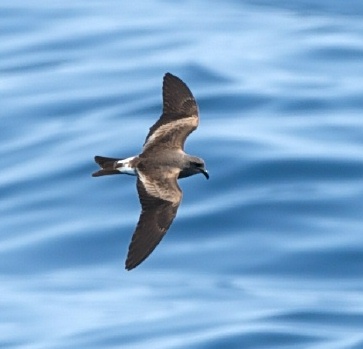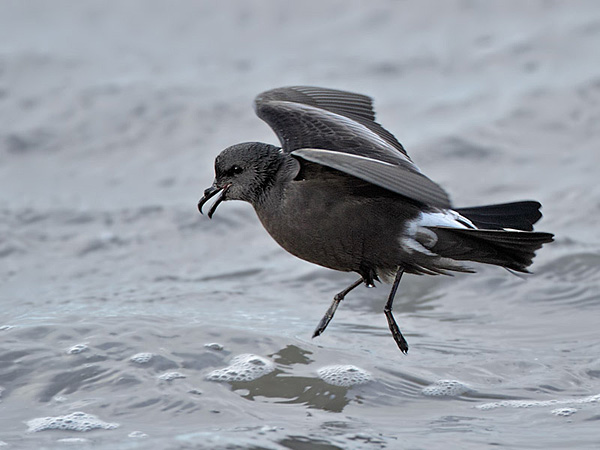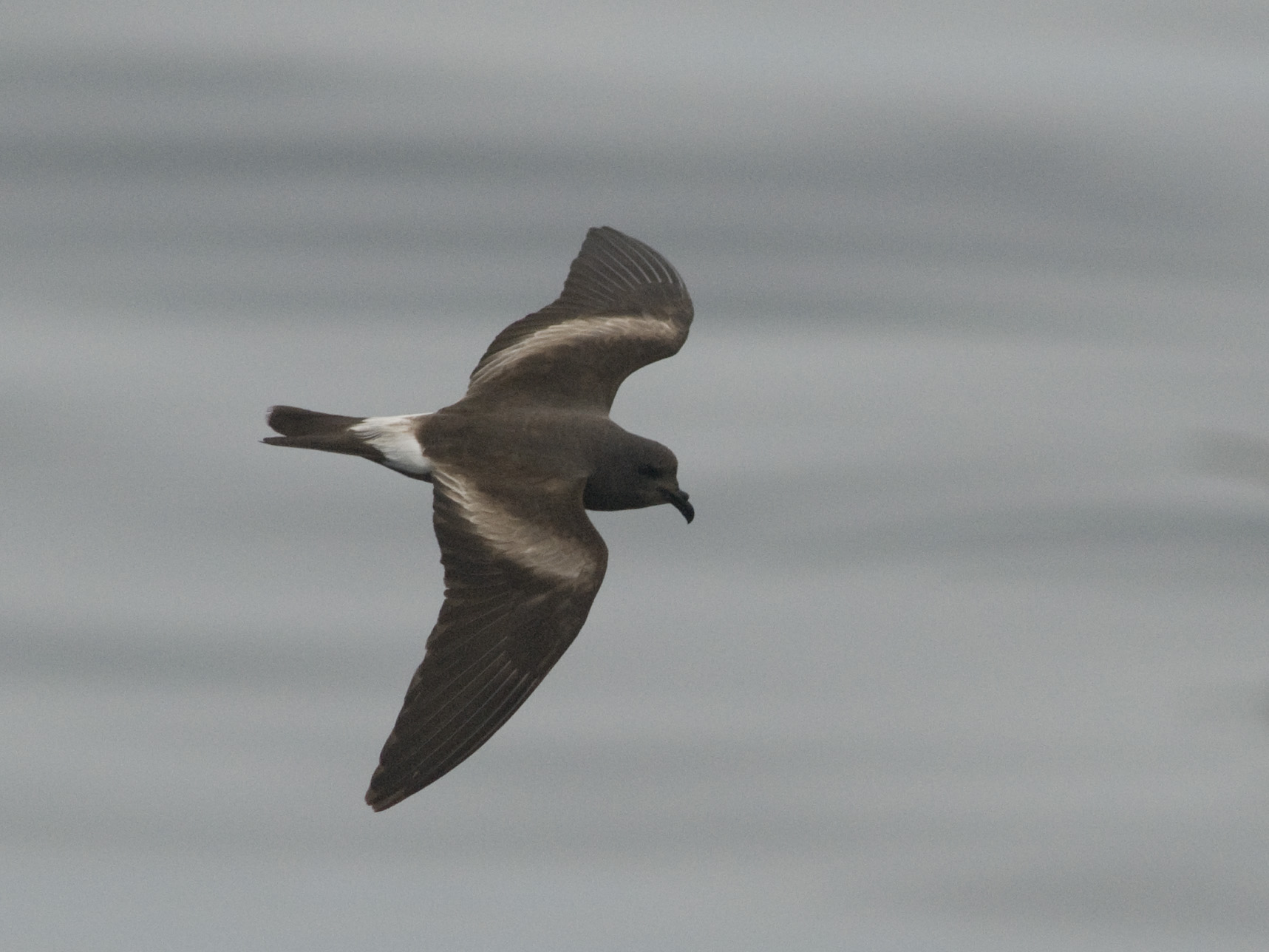
Oceanodroma leucorhoa
SUBFAMILY
Hydrobatinae
TAXONOMY
Oceanodroma leucorhoa Vieillot, 1818, maritime parts of Picardy.
O. l. leucorhoa: all North Atlantic and North Pacific populations
south to California. Populations in eastern Pacific vary in size
and degree of white on rump; O. l. chapmani: breeds on San
Benitos and Los Coronados islands, Mexico. O. l. socorrensis:
breeds in summer on islets off Guadalupe Island, Mexico. O. l.
cheimomnestes: breeds in winter on islets off Guadalupe Island,
Mexico.
OTHER COMMON NAMES
French: Pйtrel culblanc; German: Wellenlaьfer; Spanish: Paiсo
de Leach.
PHYSICAL
CHARACTERISTICS
7.0–8.5 in (180–220
mm); 1.3–1.9 oz
(38–54 g). Mediumsized
storm-petrel
with white rump
patch and distinctly
forked tail, blackish
brown above and below
with paler diagonal
upperwing bar
from carpal joint
back to trailing edge
near body. Strongly
downhooked bill and
prominent nostrils. Legs and feet black. Sexes alike. Flight less
fluttering than that of Wilson’s storm-petrel and wings tend to
be held more horizontally than those of Wilson’s storm-petrel
(which raises its wings into a V). Feet not visible beyond tail
and much less prone to pattering.
DISTRIBUTION
Breeds on islands in the North Atlantic and North Pacific that
lack mammalian predators. Found at sea throughout these seas,
migrates south into the tropics after breeding. Pairs have even
been found in burrows on the Chatham Islands, New Zealand.
One bird was found on St. Croix Island, South Africa, which
suggests the possibility of extending the breeding range southwards.
The eastern North American populations shift south to
Brazilian waters but many cross to European seas like the Bay
of Biscay. British breeders appear to winter mainly off tropical
Africa. Japanese and Alaskan birds also winter in tropical seas.
HABITAT
Ranges widely in the open sea. California birds feed farther out
in warmer, less productive seas than do ashy and fork-tailed
storm-petrels with which they often share nesting islands.
BEHAVIOR
On land, overflying birds that emit calls are mainly prebreeders;
nesting birds call mostly from their burrows. Little display
occurs between breeding birds except persistent calling using
two main types of rhythmic purrings and chatterings. Chatter
calls are given from the air and the burrow, and research in
Japan suggests that variation in the pitch of calls among birds
of the same sex may be used for individual recognition.
FEEDING ECOLOGY AND DIET
Nekton and planktonic organisms are taken from the surface
while the bird hovers facing the wind, sometimes alighting momentarily.
Otherwise the flight is a mixture of gliding and
rather wild dashes, with many changes of direction. Seldom follows
ships but is prone to be wrecked on beaches during gales.
Diet includes a great range of fish, crustaceans, and squid as
available. The birds tend to seek areas where upcurrents bring
organisms to the surface. Their stomachs often contain deepsea
animals that only approach the surface at night, evidently
taken after dark. They appear to find some prey using their
good sense of smell.
REPRODUCTIVE BIOLOGY
Most breed at around five years old. Having gained a nest site,
a pair remains intact as long as they reproduce satisfactorily.
Most dig burrows, but some occupy crevices among rocks or
stone walls. The single egg is occasionally replaced if it is lost
soon after laying. Both sexes incubate in 2–3 day shifts for
about 43 days. Chick is fed almost nightly in the first few days
after the brief brooding period, then less often as it grows. Unfed
chicks become torpid but can recover. Growth follows the
normal curve: weight climbs steadily at a constant rate, levels
out at above parental weight, then falls in the last 10 or so days
before fledging.
Fledging occurs when the chick is between 56 and 79 days.
The number of chicks fledged per egg laid differs between
seasons and places and ranges from 48 to 73%. Losses have
often been due to introduced mammals like mink, cats, and
others, but natural predators also include owls, eagles, corvids,
and gulls.
CONSERVATION STATUS
Not threatened, but existing colonies need protection against
the introduction of placental mammals and trampling of burrows.
SIGNIFICANCE TO HUMANS
None known.
Other popular Animals
Photo Gallery of - Leach’s storm-petrel




 Animalia Life
Animalia Life